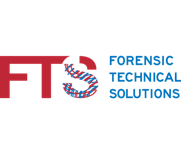Lasering Psoriasis Away
By combining insights from microvascular biology, biomedical laser physics, and medical laser dermatology this project addresses a hereto unsolved puzzle in the management of psoriasis: Why selective photo thermolysis of psoriasis (SPT) achieves a long duration of remission. The involved partners, Amsterdam UMC, FTS and Multicare, build on a strong scientific and practical experience in the field of laser physics and therapy for dermatological applications. Through their collective expertise and knowledge, the question can be addressed from a multitude of relevant perspectives.
Psoriasis is a common chronic skin condition which requires continuous treatment, which is expensive and involves long term risks. As such, the treatment of psoriasis forms a substantial burden on both the patient and public healthcare provision. The safety and long duration of treatment free remission of SPT allows for a more efficient management of psoriasis. Unfortunately, in practice consistent achievement of this result is challenging. A better understanding of the mechanism would allow for a broader deployment of the therapy, which would contribute to the quality of life of the patients and the sustainability of public expenditure.
In this research, it is hypothesised that SPT acts on the perivascular innervation, which in turn is involved in the maintenance of psoriatic lesions. By changing the perivascular nerves, the psoriatic lesions are cleared and recurrence prevented.
Thus, the effect of short significant heating of the blood vessels on the perivascular innervation is studied in a controlled environment. These experiments allows for the determination of the exact conditions required in SPT. In order to translate these insights into practice, various advanced non-invasive measurements of psoriatic lesions are combined in a computer model. This model is used to simulate SPT and thus determine the optimal properties of the laser beam required for the therapy. These predictions are validated in a clinical environment.

This collaboration project is co-funded by the PPP Allowance made available by Health~Holland, Top Sector Life Sciences & Health, to AMC to stimulate public-private partnerships. For questions, please contact AMC directly via the following email address tki@ixa.nl.


